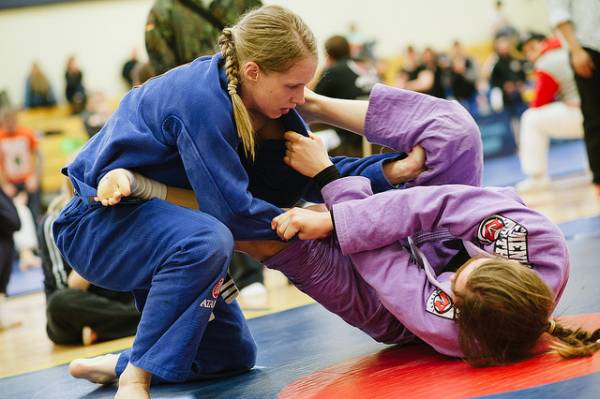
- #12 sabaki basic steps of japanese jiu jitsu for free
- #12 sabaki basic steps of japanese jiu jitsu full
(From dojo to dojo the reiho depends on the school of jujutsu being taught.
#12 sabaki basic steps of japanese jiu jitsu for free
Randoriwaza – Techniques for free practice Randori-no-kata – Form/Demonstration of randoriwaza Otagai-ne-rei (お互いに礼 ) – Mutual bow to all assembled Osaekomi – Referee call to begin timing of hold O-uchi-gari/gake (大内刈・掛け ) – Major inner reap/prop O-soto-otoshi (大外落とし ) – Major outer drop O-soto-makkikomi (大外巻き込み ) – Major/Large outer winding throw O-soto-guruma (大外車 ) – Major/Large outer wheel O-soto-gari/gake (大外刈・掛け ) – Major/Large outer reap/prop Omote (表 ) – Front or surface (Can also refer to basic skill sets of techniques in classical jujutsu schools) Nigiri (握り ) – Grip (Gyakute nigiri -reversehand grip – Junte Nigiri – Normal grip) Naginata (薙刀・長刀 ) – A long polearm with a large cutting blade. Nage-no-kata (投の形 ) – Throwing kata (usually used to refer to the Kodokan Nage-no-kata) Mudansha (無段者 ) – members with kyu grades Munen mushin – Striking without conscience Mawashi-geri (回し・廻し蹴り ) – Roundhouse kick Mae-tobi-geri (前飛び蹴り ) – Jumping front kick Mae-Mawari Sabaki – Fron-turn movement Control Kuzushi (崩し ) – Unbalancing, Unbalancing the opponent Sometimes taught in classical jujutsu, depending on the system. Kusarigama (鎖鎌 ) – Sickle & weighted chain. Kumi-Uchi (組討ち ) – Another term used instead of jujutsu Koshi (腰 )- Hip (when used first in a throw name) Ko-uchi-gari/gake (小内刈り・掛け ) – Minor inner reap/prop Kote Gaeshi (小手返し ) – Wrist turnout lock/throw Ko-soto-gari/gake (小外刈り・掛け )- Minor/small outer reap/prop Koka – Less than a yuko, (One point in Freestyle Judo) Kohai (後輩 ) – Beginner or junior student in the dojo Kogeki-Seyo – Request for judoka to be more active Kogusoku (小具足 ) – A term used in stead of jujutsu, where both practicioners use shortswords or daggers. Kime waza (極め技・業 ) – Another term for joint locking techniques Kime-no-kata – Teaches attack & defence in combat situations Kesa-Giri (袈裟切り ) – Sash cut – A diagonal cut with a Japanese sword from shoulder to hip. Kappo/Katsu (活法・活 ) – Resucitation & revival techniques Katsusatsu – Spine between the shoulder blades Katame Waza (固め技・業 ) – Joint locking/immobilizing techniques. Kata-ha-jime (片羽締め ) – Single wing strangle Kata-guruma (肩車 ) – Shoulder wheel (fireman’s lift throw) Kata (形・型 ) – Forms, Pre arranged stylized techniques

Kari (刈り ) – Reap (Changed to gari when used with a prefix word)

Kansetsu waza (関節技・業 ) – Joint Locking techniques Kake – Completion of technique, The point at which a throw will take it’s maximal effect Kachinuki Shiai – Old style, winner continues / “king of the hill” competition Kacchu-Yawara (甲冑柔 ) – Armoured close combat, where most jujutsu systems got their techniques, very few atemi used, lots of nagewaza, kansetsuwaza & the use of daggers to finish the enemy Jujutsuka (柔術家 ) – Practitioner of Jujutsu Jujutsu (柔術 ) – The gentle art/supple art/flexible art/Pliant art/soft art Juji (十字 ) – Cross (Literal translation: Figure ten. Ippon Seoi Nage (一本背負い投げ ) – One arm shoulder throw
#12 sabaki basic steps of japanese jiu jitsu full
Ippon (一本 ) – One Full point in competition Hiraken Tsuki (平拳突き ) – Horizontal fist punch Happo no Kuzushi – Kuzushi in 8 directions Hantei – Referee call for judge’s decision Gyaku (逆 )- Reverse (Can also refer to some Kansetsu waza where the joint is reversed)

Gi – Training Uniform (abbreviated from “dogi” of “keikogi”) Genkotsu-uchi (拳骨打ち ) – Another term for Uraken. Sometimes taught in classical jujutsu schools, depending on the systemīudo (武道 ) – Martial ways (literally “way(s) of war)īugei (武芸 ) – Martial crafts (Another way of referring to Japanese martial arts)īujutsu (武術 ) – Martial arts (Yet another interchangable term for Japanese martial art)Ĭhoku (直 ) – Straight (Modern usage of this word in Japanese is “Massugu”.ĭe Ashi Barai (出足払い ) – Advancing Foot Sweepĭojo (道場 ) – School or training hall for studying the wayĭori (Toru) (取り・捕り ) – To grab or capture.Įmpi Uchi (エンピ・燕飛打ち ) – Elbow strike (The term comes from karatedo and doesn’t have really much connection to jujutsu. Ani-deshi (兄弟子 ) – Senior student in the dojo (Lit: Big brother student)Īshi waza (足技・業 ) – Foot and leg techniquesĪtemi (当身 ) – Striking, Strike to a vital areaĪtemi waza (当身業・技 ) – Striking Techniquesīokuto (木刀 ) – Another term for a wooden swordīojutsu (棒術 ) – Staff-art.


 0 kommentar(er)
0 kommentar(er)
